Blackening Waxcap / Summer / Autumn / Inedible
Step into the captivating world of the Blackening Waxcap, scientifically known as Hygrocybe conica, as we explore the intriguing qualities of this enigmatic mushroom.
In this blog post, we embark on a journey to uncover the distinctive features and fascinating transformations that make the Blackening Waxcap a unique and sought-after find for mushroom enthusiasts. From its vibrant and eye-catching colors to its intriguing blackening process, Hygrocybe conica offers a captivating display of nature’s wonders. Join us as we dive into the identification, ecology, and enchanting traits of this mushroom, unravelling the mysteries behind its color-changing phenomenon. Let us embrace the colorful enigma of the Blackening Waxcap, where nature’s artistic palette meets our curiosities, as we gain a deeper appreciation for the wonders that lie beneath the forest canopy.
Scientific Name
Hygrocybe conica
Common Names
Blackening Waxcap, Black Wavy cap, Witches Hat
Family
Hygrophoraceae
Habitat
They are found in unimproved fields and pasture, verges and sand dunes.
Description
One of the most common Waxcaps in the UK, they are very variable in colour and shape. They appear very quickly after a heavy rain sometimes in large groups.
Identifying Features:
Cap:
They are very variable, the caps can be yellow, orange or red. The shape can also vary a lot most are convex or bell shaped but they can also be flat or upturned. They all tend to have a raised central umbo and will blacken with age or when damaged. Slimy when wet and up to 7cm across
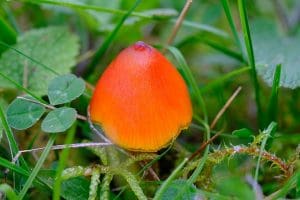
Stem
The stems are off white to yellow but with a reddish tinge towards the caps. Like the cap the stem will blacken with age or when damaged. Fairly stout, hollow and up to 10cm long.
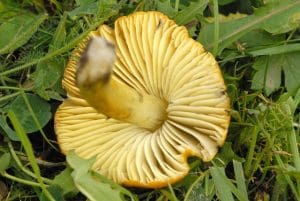
Gills
Yellow when young again blackening with age. The gills can be adnexed or almost free, are fairly widely spaced and have lateral ribs joining the gills.
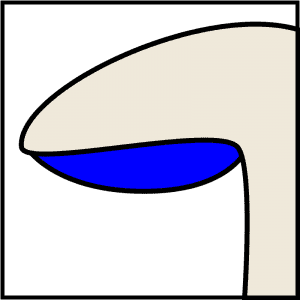
Smell:
No strong smell.
Spores:
White
Uses
In food
They are edible but due to habitat loss and changes in land use, Waxcaps are getting rarer and rarer. I personally don’t eat them for this reason and the fact that they are pretty insubstantial and not really that appealing once black. You’re best just taking some photos.
Known hazards
Most guides list it as edible but there are reports of people suffering gastric upset after eating this mushroom.
Potential lookalikes
They could be confused with the Scarlet Waxcap (Hygrocybe coccinea), but this is typically smaller, has reddish flesh and does not turn black.
The Dune Waxcap (Hygrocybe conicoides) looks similar and does turn black but rarely all over and it turns black a lot slower. As the name suggests it’s only found on sand dunes.
Extra Notes from the Foragers
For a long time it was thought that Waxcaps were saprotrophic feeding on the dead root systems of grass. Modern research suggests that they have a symbiotic relationship with mosses.
The name Hygrocybe means ‘watery head’.
Reference:
https://www.first-nature.com/fungi/hygrocybe-conica.php



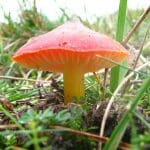
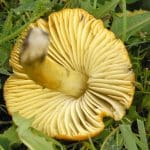
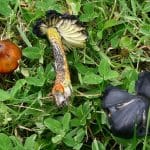
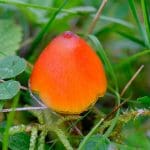
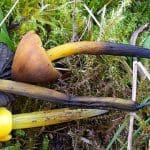
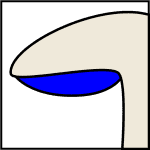



Leave a Reply
You must be logged in to post a comment.